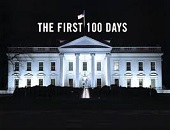When it comes to changing the Dodd-Frank Act (DFA), the new Trump administration “may find repeal and replace is not really a good strategy,” said Tim McTaggart, partner at Stinson Leonard Street, LLP. He was the second of two presenters during the webinar on planned changes to the Dodd-Frank Act, April 27, 2017, timed to coincide with the 100th day since Donald Trump became U.S. president. The webinar was sponsored by the Global Association of Risk Professionals.
The changes could involve a reconfiguration or readjustment of the regulatory process, coupled with “some really interesting personnel appointments,” McTaggart said. It’s a moving target because Congress and the administration are “moving in different directions on certain points.”
Wholesale repeal of the Act is not a good idea and no one is seriously suggesting this at the moment. He emphasized lawmakers need to go slow on writing legislation, and there are “concerns about adverse publicity.”
Working with a new administration involves a “recalibration.” There will be a learning curve, and continued analysis of what`s going on. “The new administration has more of a market orientation,” he said. Communication through the Twitter account means there will be a need for personnel to be nimble, quick on the uptake, and able to keep up with the rapid pace. Those new to government must be able to navigate the public policy requirements.
McTaggart felt regulators were achieving some comfort level for knowing which banks were “too big to fail” or systemically important financial institutions. “There`s been advancement in modelling financial distress but it`s still more art than science,” he said. The last financial crisis left some unanswered questions such as why certain financial institutions were merged, and others not. “It was not the best test case,” he said.
He characterized the proposed Financial Choice Act of the new administration as “a moving target.” There will be some aspects that resonate with both the House and Senate, and this subset of items will be presented as a consensus. The Volcker Rule, which restricts proprietary trading by commercial banks, might be changed, “although Volcker is around and will defend it.”
The Consumer Financial Protection Bureau (CFPB) might also be changed. It was set up as an independent agency in answer to the excesses of the financial crisis of 2007-2008 but now it is challenged as being unconstitutional. Its fate is currently being decided in a court of law, with the case of mortgage lender PHH Corporation. The question boils down to whether the head of the CFPB can be removed “at will” (and therefore must do the President’s bidding) or whether he can only be removed “for cause” and is thus at arm’s length from the administration. “This is a hot issue,” he said.
McTaggart referred briefly to the steps taken to curtail regulation, namely, some of the executive orders and memoranda. There is a set of what the administration calls “2-for-1 Regulations.” He noted, “It’s not clear this will hold up under judicial scrutiny.” Regulations from one agency could cancel out regulations from another agency. He described it as “unconventional, not within the mainstream.”
The bulk of the activity is occurring with executive orders on “core principles.” The DFA must be reviewed by June 3, 2017, and the Secretary of Treasury must issue ongoing reports on the DFA: what`s been done, what hasn’t been done. McTaggart expressed hope that there will not be a wholesale dismantling of the DFA but rather a thoughtful re-evaluation and improvement.
Several benefits of the DFA have appeared already. It has successfully diminished volatility. Financial institutions are performing in a more predictable manner, thus leading to a more stable financial sector. And that is a very good thing. ª
Click here to read about the first speaker’s presentation.
Click here to view the GARP Webcast- Risk RX: A Check-up on Regulatory Risk During the First 100 days of the new Presidential Administration: http://bit.ly/2mUpSjp


